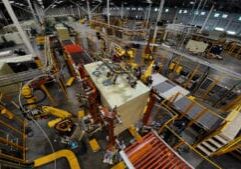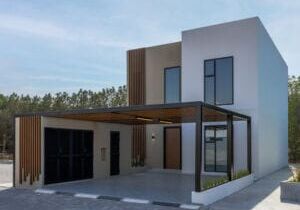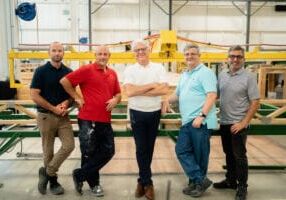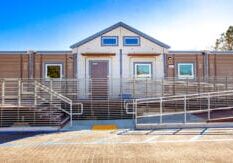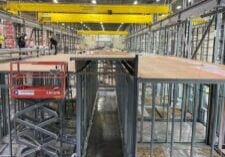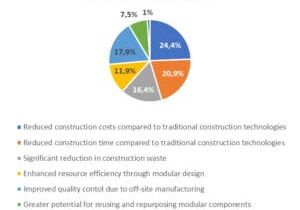This Partnership Strives to ‘Take the Hell Out of Healthcare’

John Buongiorno is the Director, Modular Division, at Axis Construction
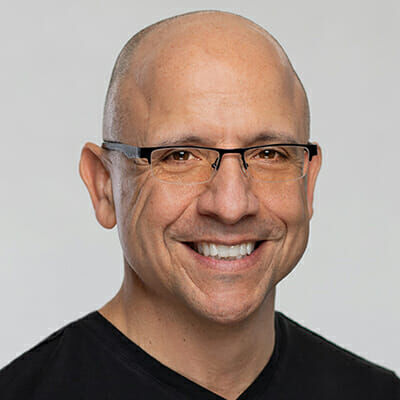
Jim Gabriel is President & CEO at MODLOGIQ
New York general contractor The Axis Group and Pennsylvania modular manufacturer MODLOGIQ have partnered on many projects over the years. Their unique relationship has led to success using modular construction in an uncommon way: to construct healthcare buildings.
John Buongiorno, Director of the Modular Division at Axis, and Jim Gabriel, President and CEO of MODLOGIQ, have been working together for over 20 years. The partnership’s past healthcare successes include a pediatric emergency department that was constructed during the height of the COVID pandemic. Modular construction allowed the team to complete the project nine months ahead of the completion time for standard construction. “Being able to start putting patients through that addition nine months ahead of time certainly benefited the facility, and it also helped the community,” said Buongiorno. “This particular hospital sees over 20,000 pediatric emergency department visits a year.”
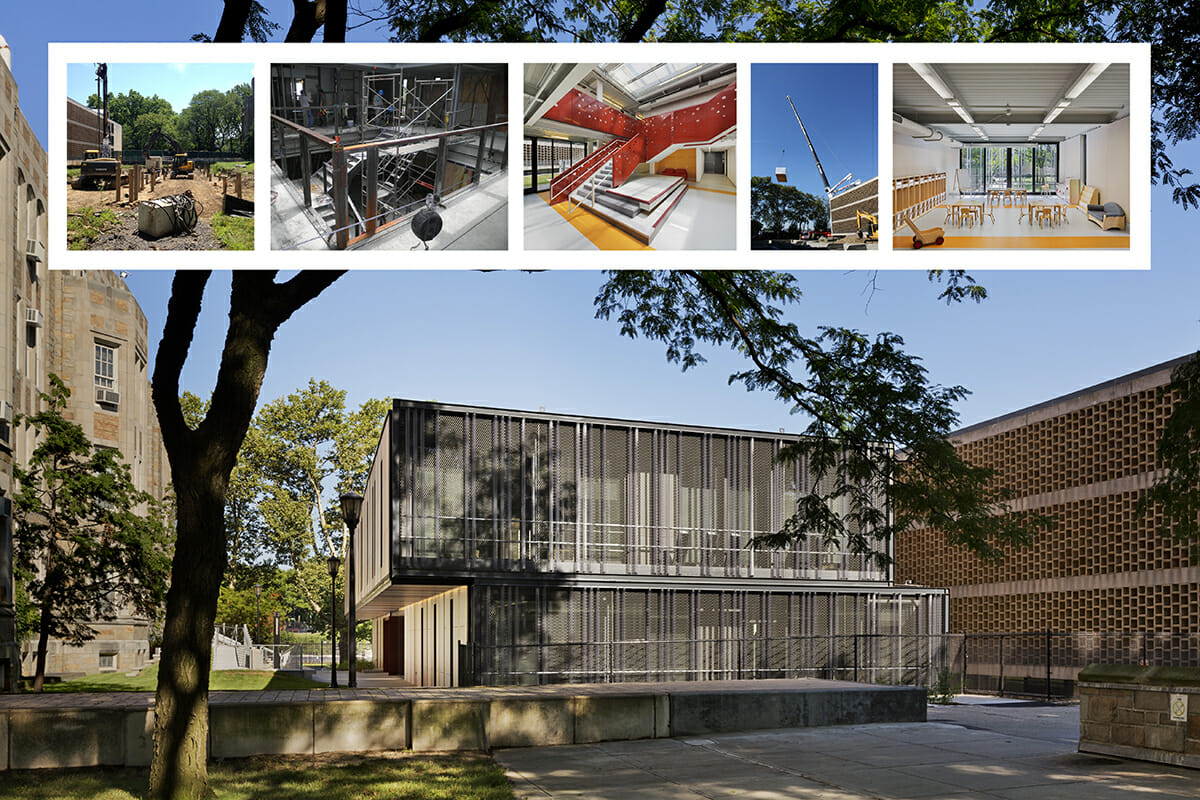
Start to finish on Axis Construction and MODLOGIQ’s Lehman Childcare Center at the City University of New York.
A Common Beginning
Buongiorno has been Director of the Modular Division at Axis for 24 years and will become the new vice president of MBI in March. He began working in the industry at a small mobile office company. From there he jumped around to two other national firms before getting the offer at Axis. The company works as a general contractor in the Northeastern US, and he manages all the permanent modular projects. His staff includes two assistants working on estimating and project management, and they recently added an estimator for the department and a new project manager to focus solely on modular.
Gabriel began his modular career at a small firm in Cleveland and was almost immediately drawn to custom modular projects. The company was bought out by GE and he went to work for ModSpace, where he was in charge of the medical division and began designing programs to apply modular construction to healthcare applications. He worked with companies like Siemens, Hitachi, and Toshiba to design applications for diagnostic imaging, dialysis, interventional radiology, and similar applications. In 2018 he was hired by NRB, which was the precursor to MODLOGIQ after its sale in 2019, to provide business development services, and he purchased MODLOGIQ in 2021.
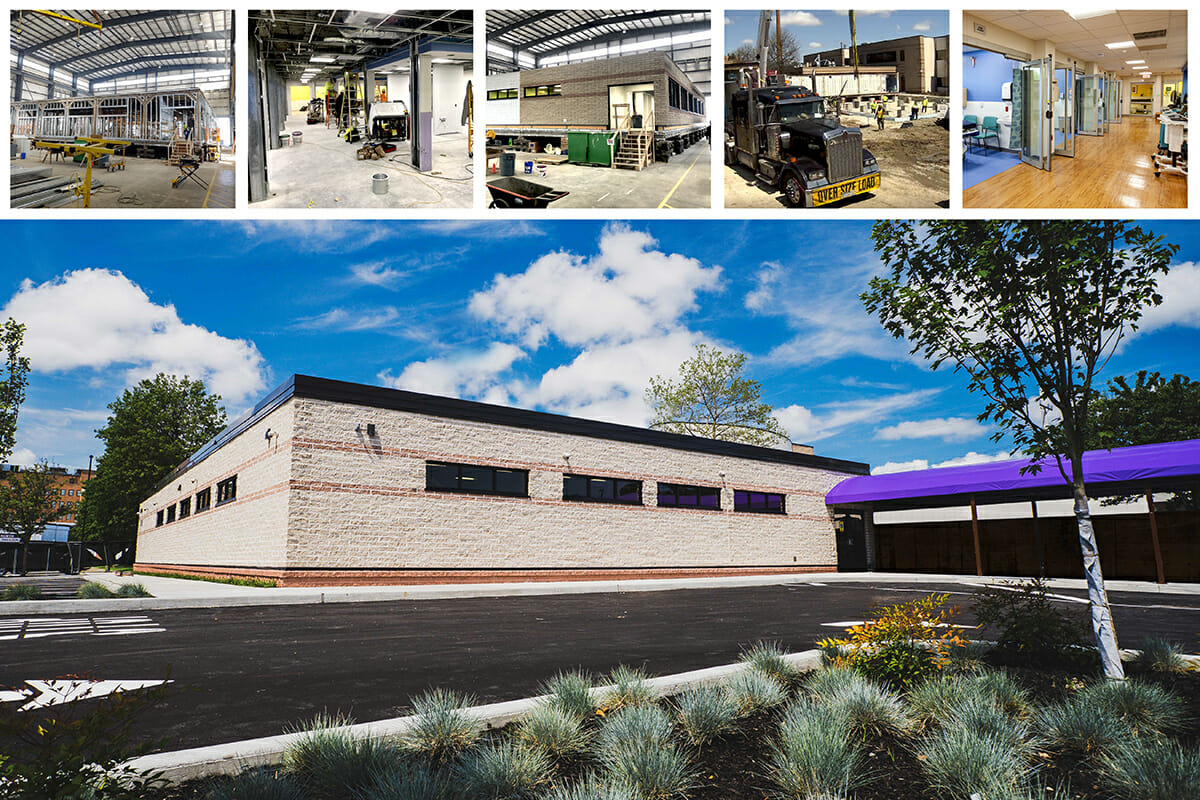
Axis Construction and MODLOGIQ collaborated on the award-winning Good Samaritan Pediatric Emergency Room in 2020.
The partnership began when Buongiorno visited NRB early in his time at Axis to tour the facility, see how they did things and develop a relationship. Axis was asked to assist with a project that NRB was producing for a three story 53,000 square foot school addition. To facilitate the project more effectively, NRB decided to open a plant in Pennsylvania. From there, the two have partnered on many projects and have what Buongiorno called a “strategic alliance.”
Both compliment the other on their skills, quality of work, and collaboration. The relationship has grown to a point now where the two collaborate on presentations to market the benefits of modular to the general construction community. Together they work hard to not only win clients over with their current projects, but to attract future work from them as well.
They provide their clients with two main benefits: speed of construction and cost control. For example, Axis had a dormitory project where they pitched modular construction to the client. The client met with MODLOGIQ and decided on the spot to use modular because of the speed with which the project could be completed. Their plan saved the school a year in construction time. The added benefit of knowing and controlling construction costs has also led many clients to choose this method. Gabriel called modular “the greatest cost certain option.”
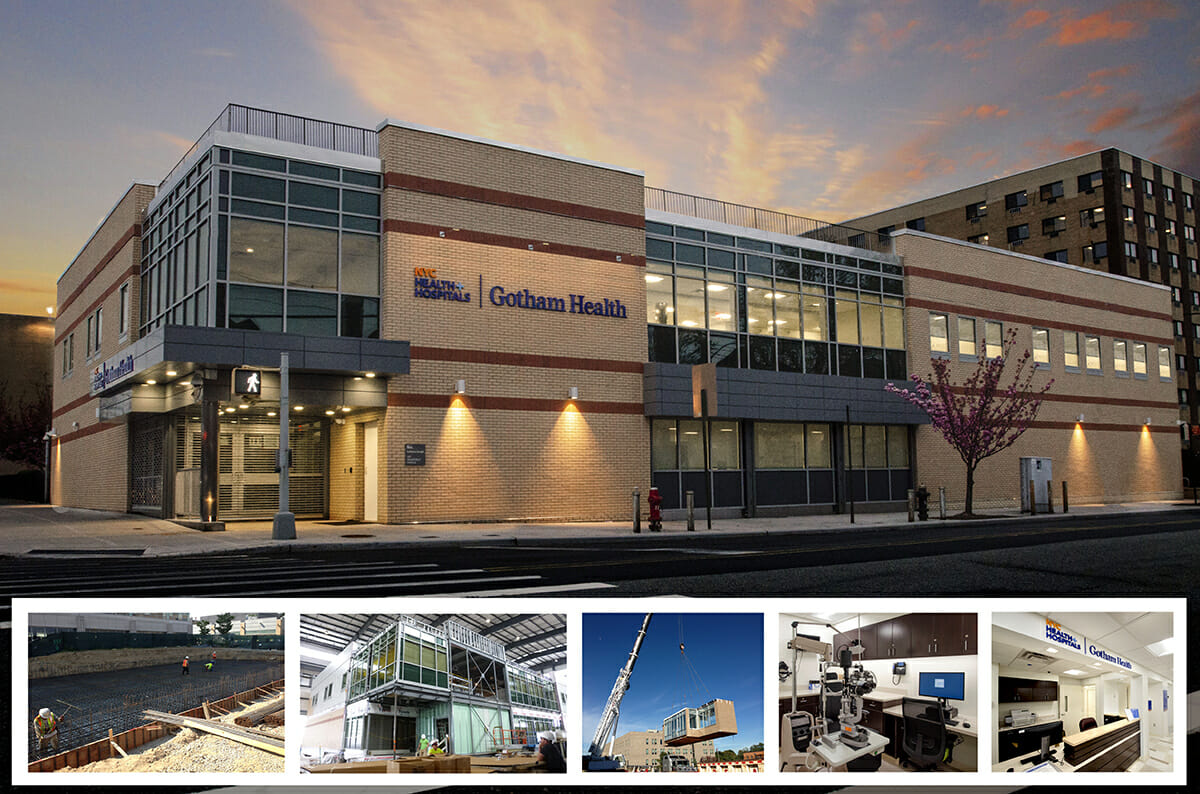
The Vanderbilt Medical Center, built for NYC Health+Hospitals’ Gotham Health network, won “Best of Show” at MBI’s 2019 Awards of Distinction ceremony. The two-story structure was assembled in just six days.
2023 World of Modular Presentation
The title for their WOM presentation, Take the Hell Out of Healthcare, comes from a book by the same name authored by F. Nicholas Jacobs, a former hospital CEO who is a friend of Gabriel’s. The book is about how to improve the quality of care and the healthcare environment. Their presentation will focus on how to simplify the approach, overcome reluctance, and specifics on how to apply modular to this highly specialized application.
We don’t want the difficulty of these applications to prevent our industry from becoming a primary source, or at least a professionally recognized source, for the application of modular construction with these types of applications,” said Gabriel.
Traditionally modular construction is not often used on healthcare projects. “There is a high degree of interest in modular offsite prefabrication for a variety of applications,” said Gabriel. “Multi-family, single family, student housing, and hospitality. These are applications that modular is perfectly suited for. Healthcare is not. Healthcare, bioscience, and laboratory science.”
Axis and MODLOGIQ have teamed up on several of these projects, and currently have three under construction. “A lot of people talk about it, show renderings that they have, but not a lot have actually done it. We know how to do it” says Buongiorno. “We know how to work with the layout of the building to make sure that it’s code compliant, and also, we can build these buildings out to a very high level of completion, 80% to 90% complete. It isn’t tough when you’re dealing with folks that have done it.”
Their current projects include a 100,000 square foot micro hospital facility that is the largest modular healthcare building in the US, and two emergency room additions.
The pair hope to reach out to healthcare professionals and others involved in the construction process for these projects to show them how modular can be effectively used for these applications.
About the Author: Dawn Killough is a freelance construction writer with over 25 years of experience working with construction companies, subcontractors and general contractors. Her published work can be found at dkilloughwriter.com.
More from Modular Advantage
Resia: Breaking All the Rules
Resia Manufacturing, a division of U.S.-based Resia, is now offering prefabricated bathroom and kitchen components to industry partners. Its hybrid fabrication facility produces more precise bathroom and kitchen components (modules) faster and at lower cost than traditional construction. Here’s how Resia Manufacturing does it.
How LINQ Modular Innovates to Bring Modular To The Market in the UAE and Beyond
LINQ Modular, with an office and three manufacturing facilities in Dubai, is a modular firm based in United Arab Emirates. The company is on a mission: to break open the housing and construction markets in the Gulf Cooperation Council (GCC) area with modular.
ModMax: Redefining Modular Construction with Confidence and Precision
ModMax was born out of frustration—frustration with five persistent pain points in modular construction: Permitting bottlenecks. Production delays. Rigid designs. Disconnect between “the office” and the field. Lack of transparency and communication.
LifeArk: Disaster-Resilient Housing from Recycled Plastic and 100-year-old Technology
Wee compares LifeArk’s housing units to Yeti coolers, as they are built similarly. Each component takes 15 to 20 minutes to manufacture, has an R-value of 40, and includes molded slots and chases for wiring, plumbing, fire sprinklers, and other utilities.
Building the Future of Modular Edge Infrastructure
The edge data center market is expanding rapidly, driven by the surge in AI workloads, IoT adoption, and the need for localized compute power. In these environments, sustainability, scalability, and reliability are non-negotiable. Cooling is among the most complex challenges for operators—and one of the most decisive factors in long-term success.
Accelerating Light-Gauge Steel Construction: A Semi-Automated Digital Workflow for Off-Site Projects
For construction professionals, the message is clear. By adopting semi-automation and digitalization, companies can deliver projects faster, more accurately, and more profitably, while also building stronger collaboration across teams. The approach is not about replacing people with machines, but about empowering people with better tools and processes.
Why Modular Data Centers Are Gaining Momentum
Artificial intelligence, high-performance computing, and edge applications push the limits of traditional “stick-built” data centers. They take years build, often struggle with high density workloads, and aren’t optimized for deployments near end users. Modular data center platforms are purpose-built to address these challenges, offering flexibility and scalability to adapt to evolving technologies, while opening new opportunities for the modular construction industry.
Supply Chain Innovation in Action: 5 Habits Every Modular Leader Should Practice
By applying these principles to supply chain practices — collaborative planning, strategic procurement, scenario modeling, digital tools, and transparent forecasting — construction leaders can build value chains that are not just efficient and agile, but truly innovative.
Exploring the Role of Modular Integrated Construction (MiC) in Advancing Circular City Principles – A Survey of Stakeholder Perspectives
The survey findings highlight the significant potential of Modular integrated Construction (MiC) in advancing the development of circular cities. By reducing costs, accelerating construction timelines, and minimizing waste generation, MiC offers a promising approach to sustainable urban development.
The Use of MS POLYMER™-Based Sealants and Adhesives in Modular Building
These products combine flexibility and elastic recovery with excellent adhesion to different substrates and have already shown their usefulness in traditional construction. Now it’s time for them to be put to use in the modular construction industry.

